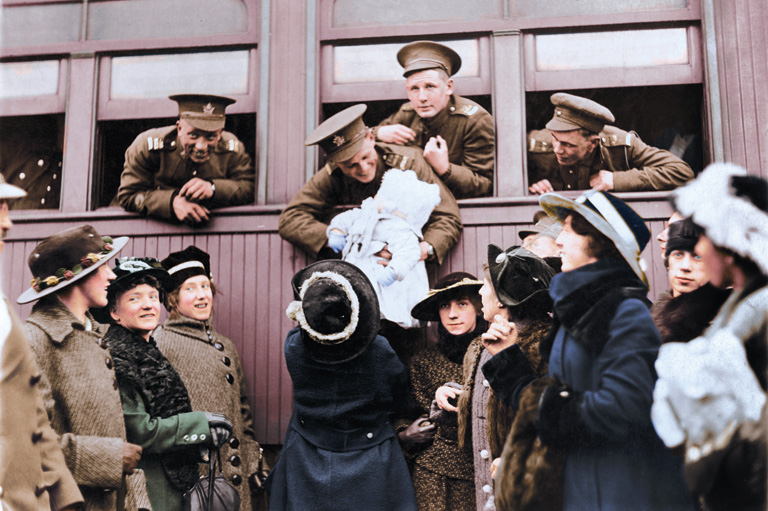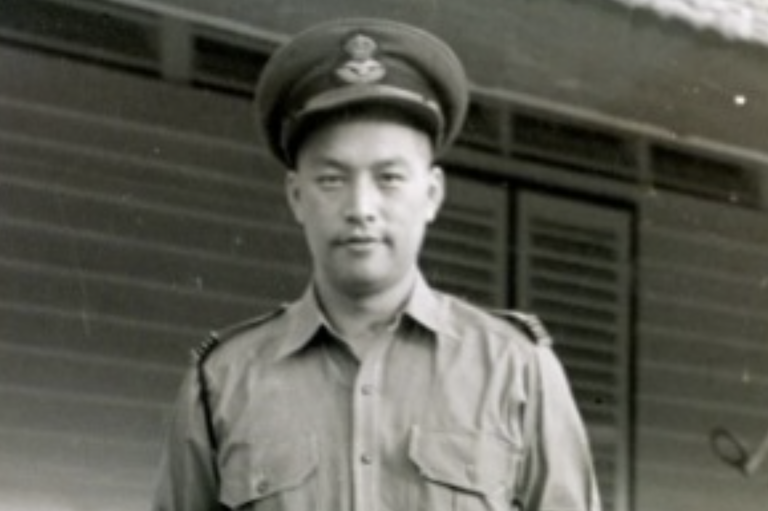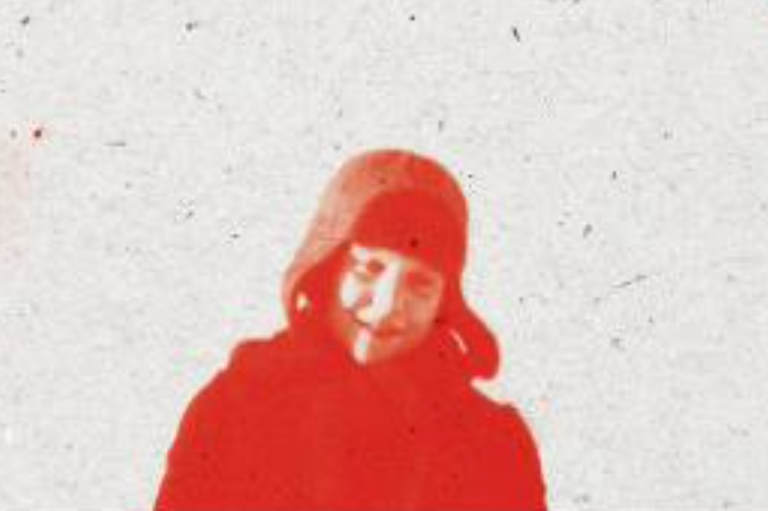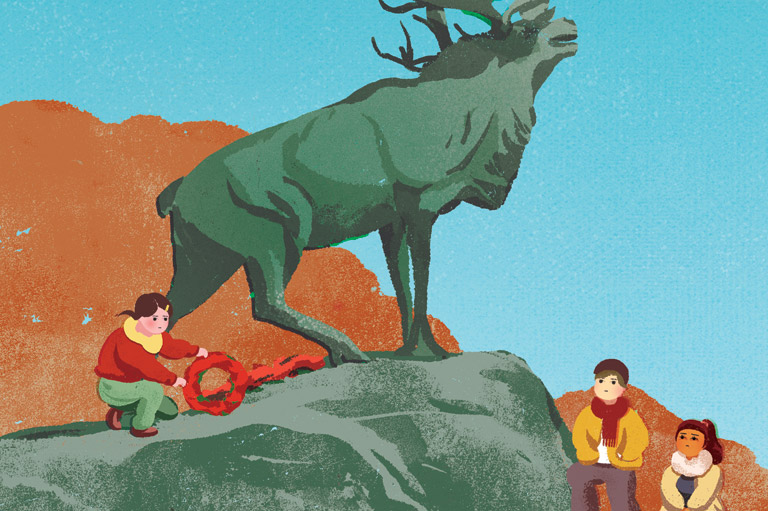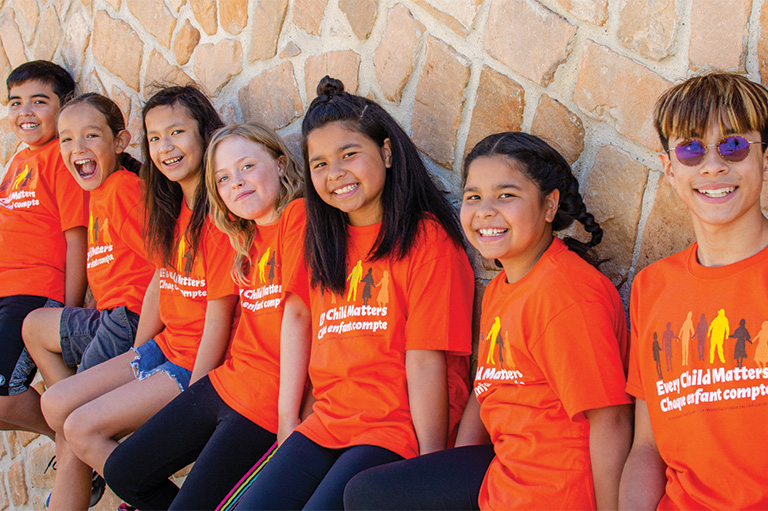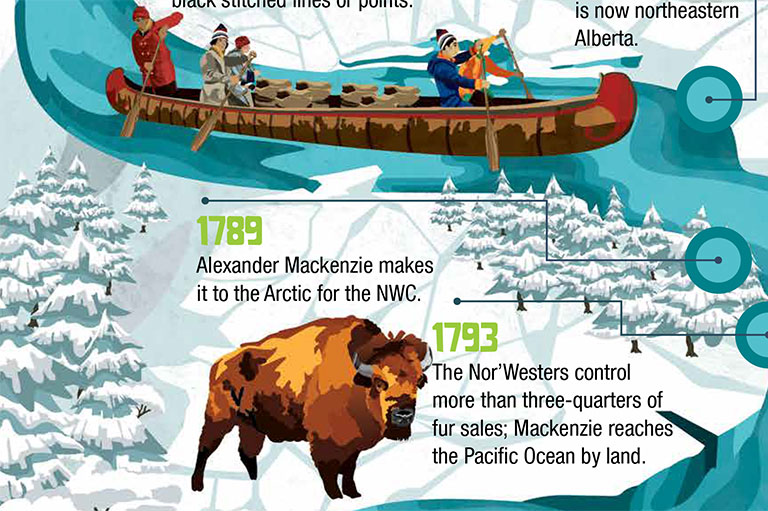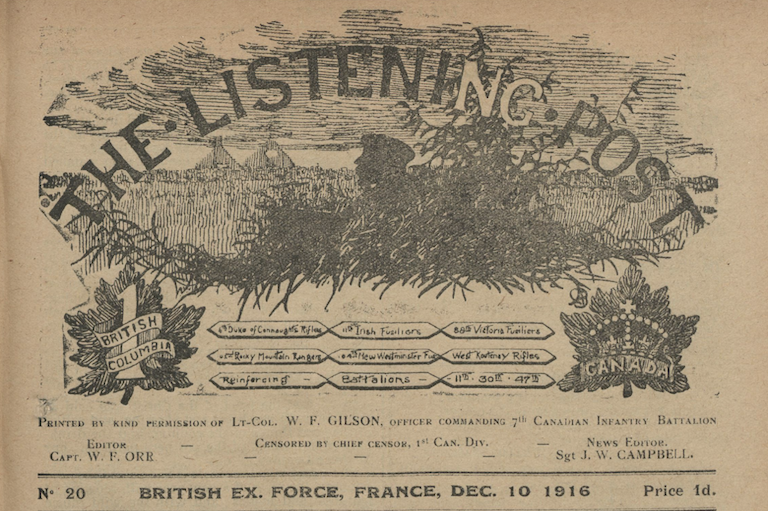Through Their Eyes: Humanizing War and Peace
Overview
When teaching the history of peace and conflict in the 20th century, it’s important to frame students’ learning around the historical thinking concepts — by centring real people to reinforce understanding of ethical dimensions and taking historical perspectives. After all, war, peace, and what lies in between are the results of actions taken by historical actors, who were, in turn, shaped by the beliefs and conditions around them. These diverse individuals and their divergent perspectives act as an enlightening window into the past, humanizing events for our students and equipping them with concrete evidence that can be used to assess — and perhaps even challenge — traditional narratives.
Students will choose a historical figure, mundane or infamous, and conduct individual research to discover what five minutes in their life might look like. This must be a Canadian who lived during the First World War. With each step, students will engage directly with a specific historical thinking concept and build on their research to complete a final narrative summary using facts and details they discovered in their research. Students will directly interrogate their chosen historical figure’s perspective and lived experiences to grapple first-hand, as historians, with the complexities of the relevant thinking concepts.
Students are asked to document and cite their evidence in whatever manner the educator feels are appropriate; there are no set parameters for presenting this information. For younger learners, educators may want to provide specific benchmarks to aid in research.
This lesson can be adapted to fit within any Canadian war unit.
Activity
Ask your students to identify a real-life historical figure to carry them through the entirety of the lesson. This can be a figure well known in history, or an everyday person relatively unknown to the historical record. Educators could provide a list of potential historical figures to their students or have them identify a figure on their own. Additionally, educators should make each step’s instructions available to their students either in print or digitally.
Step 1:
Going “Over the Top” — Searching for Historical Significance
- This exercise will help you to deepen your understanding of historical significance as you experience a simulation of the life of a Canadian solider on the Western Front of the First World War.
- Follow the prompts that take you through the “Over the Top” simulation.
- Note the events, conditions, artifacts, and/or actors in trench life that might significantly impact your historical figure’s life experience. Try to capture and reflect upon 5-10 significant events (the more the better). Educators may wish to provide students with a worksheet to better organize their notes.
- Write a short summary of your historical figure’s experience and analyse for significance.
- Summarize: How would you describe the overall experience of life in the trenches?
- Analyze: From their perspective, what might be the most significant conditions, actors, and/or events that shaped their lives, experiences, and surrounding context?
Remind your students to consider the below criteria when evaluating the historical significance of people and events:
- Turning points: Events, people, or developments have historical significance if they result in change — deep consequences, for many people, over a long period of time.
- Revealing: Events, people, or developments have historical significance if they shed light on enduring or emerging issues in history or contemporary life.
- Meaningful: Historical Significance is not inherent but constructed — events, people, and developments are only significant once they are given a meaningful place in a narrative.
- Variable: Historical significance varies over time, from group to group, and depends heavily on one’s perspective.
Step 2:
Coward — Exploring Historical Perspectives
Watch the short movie Coward (2012), by Terry Donnelly, as a class. Ask your students to make notes as they watch.
- As you watch the short movie Coward, make notes on the individual perspectives of the four characters in the film. Take note especially of how each character responds to the event played out in the film.
- After the film is complete, analyse the evidence as a class to determine the most significant moments and artifacts. Educators can pose these questions to students to help them analyse their evidence individually or as a class.
- What was the single most significant moment in the film and why?
- What was the single most significant artifact and why?
- What, if any, “universal human experiences” (human emotions/or experiences that are timeless) could you identify with and relate to during the film?
- Individually, ask your students to define historical perspective and historical significance based on the evidence they’ve gathered so far. Come together as a class and define the two terms.
Remind your students to keep these criteria in mind when looking at historical perspectives at this stage:
- Avoid presentism: Worldviews of people in the past can be very different from those of our modern-day world, which is why we should avoid imposing present ideas and values on people in the past.
- Use evidence: Taking the perspective of historical actors means inferring how people felt and thought about the past. It does not mean identifying with those actors. Inferences made should only ever be rooted in evidence, with sources to back you up.
- Analyze context: The perspectives of historical actors are best understood when we contextualize them (look at what was going on in the world around them).
- Consider perspective: Different historical actors have very different perspectives on the events they are involved in. Exploring these differences is essential if we are to figure out what happened in the past.
Step 3:
Actors in Context — Exploring Historical Figures and Their Surroundings
- Individually, research your historical figure and answer the 5 W’s: Who, What, Where, When, and Why. Record the sources you use to answer these questions.
- Expand your initial research to understand the historical context of your figure. Answer these questions to dig deeper:
- Geography:
- Where are they?
- How does their location impact their experience?
- Can you find their absolute and/or relative locations?
- Context:
- What’s happening around them?
- What lead up to this moment/event? How did it evolve?
- What factors contributed?
- Who else was involved? How were they interacting with your character?
- What was the situation like?
- How did it resolve in the short-term? And the long-term?
- Geography:
Step 4:
Becoming an Expert — Assessing the Significance of Historical Artifacts
- Identify: Identify three relevant artifacts that surround and/or are engaging your historical figure.
- What artifact(s) are they using?
- How are the artifacts being used?
- Understand: Explore how your historical figure is engaging with these three artifacts.
- How are they impacting your historical figure?
- What about the wider impact of the artifacts in their context in the world around them?
- What happened or developed as a result of these artifacts?
- Did any of these artifacts change the world? If so, how? Make reference to how you define “changing the world.”
- Analyze: Choose one of the artifacts to analyze more closely.
- How is this artifact significant to your historical figure — and the world?
- Support your assessment with sources.
- Summarize why you have chosen this artifact and its historical significance. Make reference to both its impact on your historical figure and the wider “universal human experience.”
Divide students into groups and have them introduce, describe, and explain their artifacts.
- In your assigned group, take turns very briefly:
- Introducing your historical figure and their perspective,
- Describing the artifact that you’ve selected,
- Explaining why you think it is historically significant (drawing upon the definition of significance that you created in Step 2).
- Once everyone has shared their expertise, try to reach a consensus on the following two questions:
- Whose artifact was most significant to the experience of ordinary people involved in the war?
- Which artifact was most significant in bringing about the end of the war?
- Reflect on the process:
- How did your group establish a ranking system? Was it easy to reach consensus? Why or why not?
Step 5:
The Human Experience — Writing a Historical Narrative
- Compile all the evidence and inferences you have collected through Steps 1-4. Write a short 300–500-word summary of your chosen historical figure. Educators may want to brainstorm with students some potential narratives to help them identify a perspective to write about.
- Your account should describe 5 significant minutes in their life, portraying them in a historically accurate way. Your writing should demonstrate your understanding, not only of historical perspective and significance, but also of your historical figure’s. Ensure your narrative is rooted in your research and based in facts and evidence-based inferences supported by your research. You should not include any elements or embellishments not supported by your evidence.
- Make sure to cite your sources accordingly within your narrative.
Remind your students to keep these elements in mind when writing their narratives:
- Focus on utilizing the historical thinking methods.
- Avoid first-person language.
- Avoid presentism.
- Valid inferences can only be supported by the evidence you collected.
- Resist judging your characters against present-day values.
Extension
Watch Canada in Focus Episode 1: War & Peace with your class. Ask your students to apply the same skills to researching a figure in another war discussed in the video.
Resources for Students
- Canada's History magazine / The Beaver Archive
- Canadian War Museum Archives
- Cook, Tim. (2009). At the Sharp End: Canadians Fighting the Great War, 1914-1916. Penguin Group, Canada.
- Cook, Tim. (2009). Shock Troops: Canadians Fighting the Great War, 1917-1918. Penguin Group Canada.
- Cook, Tim. The Secret History of Soldiers: How Canadians Survived the Great War. Canada, Allen Lane, 2018.
- Endacott, Jason L., and Sara Brooks. An Updated Theoretical and Practical Model for Promoting Historical Empathy. Digital image. Social Studies Research and Practice. N.p., Spring 2012. Web. 11 Apr. 2014.
- Engaging Students with Primary Sources. Washington: Smithsonian National Museum of American History Kenneth E. Behring Center. Print.
- Library and Archives Canada
- Unit Listings of 1917, CanadianSoldiers.com
- The Vimy Foundation
- Winter, Jay. The Great War and the Shaping of the 20th Century. Public Broadcasting Service. Video, 1996.
Themes associated with this article
Advertisement

